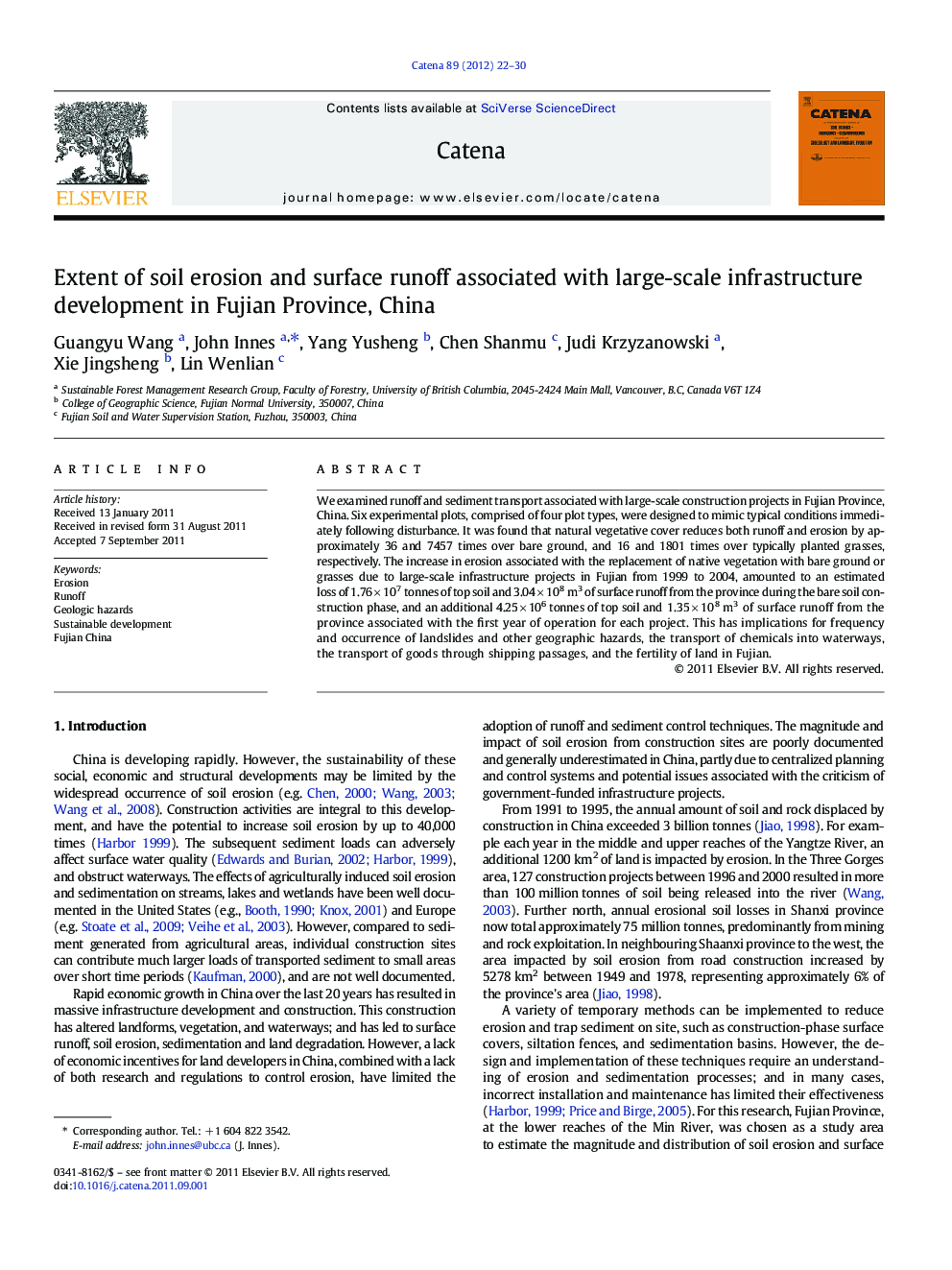| Article ID | Journal | Published Year | Pages | File Type |
|---|---|---|---|---|
| 4571957 | CATENA | 2012 | 9 Pages |
We examined runoff and sediment transport associated with large-scale construction projects in Fujian Province, China. Six experimental plots, comprised of four plot types, were designed to mimic typical conditions immediately following disturbance. It was found that natural vegetative cover reduces both runoff and erosion by approximately 36 and 7457 times over bare ground, and 16 and 1801 times over typically planted grasses, respectively. The increase in erosion associated with the replacement of native vegetation with bare ground or grasses due to large-scale infrastructure projects in Fujian from 1999 to 2004, amounted to an estimated loss of 1.76 × 107 tonnes of top soil and 3.04 × 108 m3 of surface runoff from the province during the bare soil construction phase, and an additional 4.25 × 106 tonnes of top soil and 1.35 × 108 m3 of surface runoff from the province associated with the first year of operation for each project. This has implications for frequency and occurrence of landslides and other geographic hazards, the transport of chemicals into waterways, the transport of goods through shipping passages, and the fertility of land in Fujian.
► We measured erosion and runoff from four surface types. ► We examined large-scale infrastructure construction projects in Fujian, China. ► Current practice may lead to hazards and degradation. ► Timing and other measures can minimize construction impacts.
